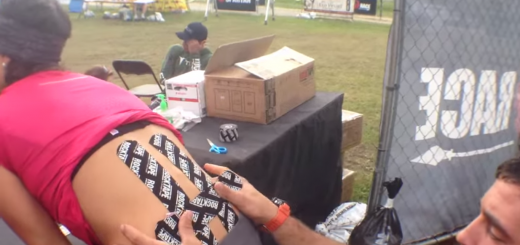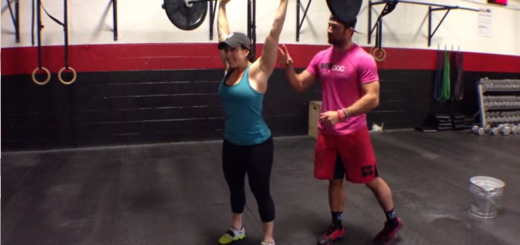Why Stretching your Low Back is Making you Worse
Your low back is meant to be a stable region in your body. Over-stretching it will make it worse.
Low back pain is common these days, and one of the first things chiropractors, physical therapists, strength coaches, and back pain sufferers themselves will encourage is stretching out the low back.Often this feels good, relieving some pain, discomfort, and stiffness, but unfortunately this relief doesn’t last.
RELATED: 6 Steps to Heal Your Low Back Injury
A Vicious Cycle of Low Back Pain
Back pain sufferers tend to have a morning routine where they stretch out their lumbar spines, only to wake up the next day feeling worse still, until they can get through their stretches again. Like an addict searching for the next hit, the back pain sufferer needs to stretch to feel better, until that one wears off and the next dose has to be administered.

Unfortunately, this is just chasing symptoms and can actually exacerbate the root of the problem. In other words, it could actually make your pain worse.
Now, I don’t want this news to upset you. For years, we’ve all thought we were doing ourselves a favor by stretching our low back. But as research progresses, we’ve learned this is not the case. So, let me explain a little bit why stretching your lumbar spine is actually a no-no.
“Unfortunately, this is just chasing symptoms and can actually exacerbate the root of the problem. In other words, it could actually make your pain worse.”
Flexion-Intolerant Low Back Pain
Most people live in a state of constant flexion. Sitting hunched over a computer at work, driving home, texting. In fact, look at yourself right now – you’re probably in this flexed position I just described.
RELATED: 4 Things You’re Doing That Sabotage Your Performance
And though it sounds counterintuitive, low back pain for chronically flexed people is usually what we refer to as flexion-intolerant. Like I said, it seems counterintuitive. If you sit in flexion all day, how can you be intolerant of flexion?
To better understand, I first need to back up a bit and explain something called capacity and tolerance.
Capacity and Tolerance
In short, this refers to the fact that each person has a certain amount of work he or she is able to do (capacity) and a certain amount of load he or she can bear (tolerance) before pain or issue occurs. If tolerance is exceeded, this is when you will see pain and, ultimately, tissue damage result.
So, how does this relate to you stretching your low back?
Capacity and Flexion-Intolerance
Too many people waste precious capacity with poor postures. Crappy standing or sitting posture means there is a constant load applied to the spine, in addition to the prolonged shortening and lengthening of certain muscles. This not only leads to muscular imbalances and pain, but it also leads to decreased tolerance.
RELATED: How to Unlock Your Athletic Potential Through Good Posture
Think about your day again – all of that sitting. Each of these flexed-spine positions is stealing some of your capacity. This means you will break into pain sooner during your day, your training, and your life. Doesn’t sound nice, does it?

Discipline of movement during everyday activities and improving lumbar stability is going to allow you to have more capacity for training. Or, if you are someone who has significant back pain, it could mean you have more capacity available for walking down the street, picking up your children, getting out of bed, or getting in and out of the car.
“Discipline of movement during everyday activities and improving lumbar stability is going to allow you to have more capacity for training.”
But stretching your lumbar spine isn’t going to help this. In fact, it’s stealing some of your capacity. Furthermore, as I mentioned, when you live in this flexed position all day, some muscles are elongated for extended periods of time, including your erector spinae, multifidis, lats, and glutes. These elongated positions mean those muscles are less able to produce force and resist further deformation of the spine.
Another Argument for Not Stretching Your Lumbar Spine
I know this is hard to hear. It feels good to stretch, and you thought it was a good thing.Truth is, so did I for a very long time.
The reason it feels good is that you perceive relief via the stimulation of the muscle stretch receptors. But this isn’t actually a good thing. In fact, it can cause more harm than good, as you are stretching already elongated muscles.
RELATED: To Static Stretch or Not to Static Stretch?
And though it feels good in the moment, by stretching your lumbar spine today, you are ensuring yourself more pain and stiffness tomorrow because these stretches actually lead to more cumulative damage to the tissues. Add disc problems into the mix, and morning stretching can really exacerbate the situation, as this is the time when your discs are swollen from the superhydration that occurs during bed rest.
What You Should Do to Relieve Low Back Pain
As hard as it is, the simple truth is you need to stop stretching your lumbar spine. I have a client who loved to stretch every day. I asked her to eliminate this extra spinal flexion, and we focused on stabilizing her lumbar spine, mobilizing her hips and thoracic spine, and teaching proper motor programming. I’m happy to say that six months later she feels like a million bucks, with no urge to stretch multiple times a day just to get relief.
“As hard as it is, the simple truth is you need to stop stretching your lumbar spine.”
And that is exactly what you need to do, too.
- Work with a professional.
- Stabilize your lumbar spine.
- Improve your muscular endurance and posture.
- Mobilize your hips and thoracic spine.

Change Is Hard to Accept
Changing what you know is hard to accept. You love your low-back stretch, and trust me, I understand. Not only did I used to love stretching my lumbar spine, I also, as a qualified clinician, loved giving it as an exercise. I believed it would help clients and wouldn’t dream of holding this exercise back from those who were in so much pain.
RELATED: Seasons of the Athlete: Evolving with Change
My turning point was at a rehabilitation conference where I sat in session after session and heard from the best low-back specialist in the world – who told me I was causing my clients pain, that we were causing their pain from prescribing stretches.
So, I went home and researched everything I could about the lumbar spine. I changed the way I treated my clients. And the results have spoken for themselves, even louder than my research.
RELATED: Strong Foundations: Building and Maintaining a Strong Low Back
So stick with me. And don’t feel like you have done anything wrong or that you should have known sooner. Some of the best clinicians and strength coaches in the world are just learning about this now. I know it is hard to eliminate a stretch that is so comforting and seemingly helpful, but give it a try and a few months from now you will be thanking me, just like my client was.
References:
1. Vera-Garcia, J. et al., “Effects of abdominal stabilization manoeuvres on the control of spine motion and stability against sudden trunk perturbations.” Journal of Electromyography and Kinesiology 17 (2007) 556-567.
2. McGill, S., “Designing Back Exercise: from Rehabilitation to Enhancing Performance.” www.backfitpro.com. Accessed Dec 5, 2014
3. McGill, S.,“The painful low back: Mechanical causes can often be identified when specifically tested for”. Parkhurst Exchange 17,(2007).
4.McGill, S.,“Enhancing Lumbar Spine Stability,” in Ultimate Back Fitness and Performance, ed. Stuart McGill, 109-122 Canada: Wabuno Publishers, Backfitpro Inc, 2004.
5. McGill, S., “Painful Backs: Cause, Corrective Exercises and Progressions to Performance.” Perform Better Functional Training Summit. Perform Better. Providence, Rhode Island, US. June 13, 2014.
6. McGill, S., “Mechanisms and Training Techniques Used for Elite Performance.” Perform Better Functional Training Summit. Perform Better. Providence, Rhode Island, US. June 14, 2014.
Photos courtesy of Shutterstock.
Original Article by: breakingmuscle.com





